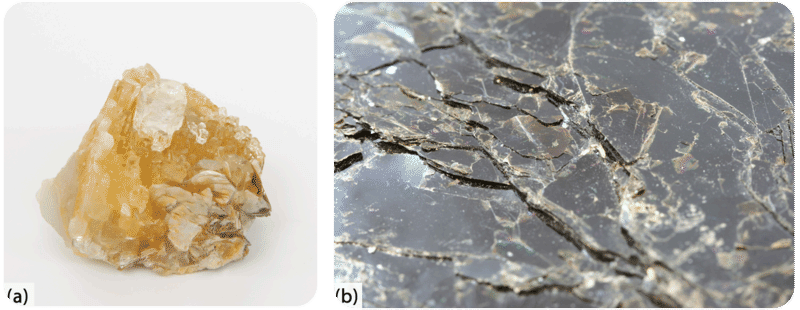Earth's Minerals (Book)
+ Groups of Minerals
Silicate Minerals
One silicon atom bonds to four oxygen atoms to form a pyramid
About 1,000 silicate minerals are known. This makes silicates the largest mineral group. Silicate minerals make up over 90 percent of Earth's crust!
Silicates contain silicon atoms and oxygen atoms. One silicon atom is bonded to four oxygen atoms. These atoms form a pyramid (Figure). The silicate pyramid is the building block of silicate minerals. Most silicates contain other elements. These elements include calcium, iron, and magnesium.
Silicate minerals are divided into six smaller groups. In each group, the silicate pyramids join together differently. The pyramids can stand alone. They can form into connected circles called rings. Some pyramids link into single and double chains. Others form large, flat sheets. Some join in three dimensions.
Feldspar and quartz are the two most common silicates. In beryl, the silicate pyramids join together as rings. Biotite is mica. It can be broken apart into thin, flexible sheets. Compare the beryl and the biotite shown in Figure.
Beryl (a) and biotite (b) are both silicate minerals.



